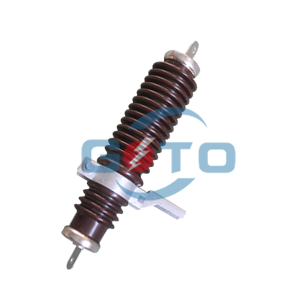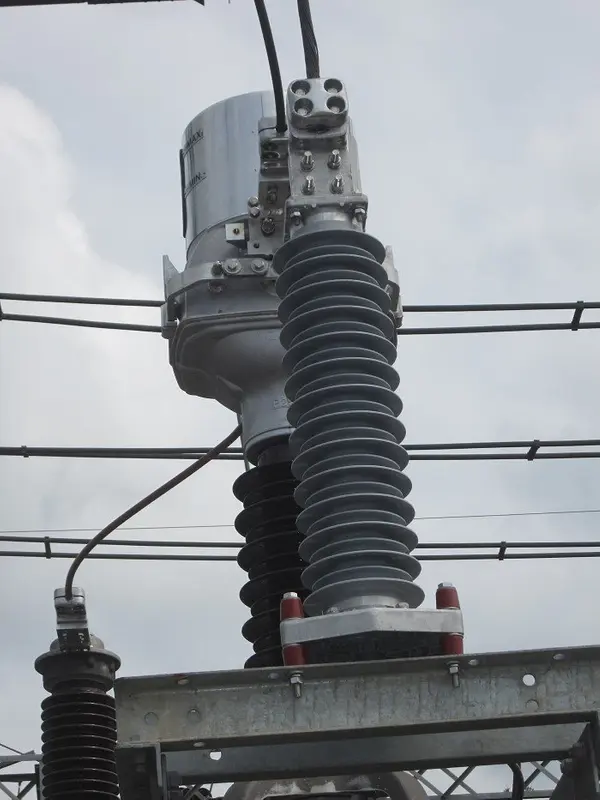When it comes to safeguarding the equipment in substations from lightning strikes and electrical surges, one of the most crucial components is the lightning arrester. But do you know where exactly to place it within the substation to ensure maximum protection? In this blog, we’ll walk through the best installation locations for lightning arresters in substations, so you can keep your systems safe and reliable.
Before we dive into the specifics of installation, let’s make sure we understand what a lightning arrester in substation actually is..
A lightning arrester, also known as a surge arrester or surge protector, is a critical device used in electrical systems to prevent overvoltage caused by lightning strikes or switching surges. It works by diverting the excess voltage safely to the ground, preventing it from reaching sensitive electrical equipment and causing damage.
In substations, these arresters are installed at various locations to ensure that high-voltage surges, often from lightning, don’t damage transformers, circuit breakers, or other essential equipment.

Now that we know what a lightning arrester is, let’s talk about why it’s so essential in a substation lightning arrester setup. The primary function of a lightning arrester in substation is to provide a path for surge currents to travel safely to the ground. Here’s how it works:
This makes the lightning arrester in substations incredibly important, as a good installation minimizes the risk of costly damage to your electrical infrastructure.
Now, let’s talk about how to install these devices properly. Proper installation ensures the arrester works efficiently for years to come. Here are the key installation specifications and standards to follow:
By following these specifications, you ensure that the arrester will perform as expected and provide optimal protection against surges.

Choosing the correct installation location for a lightning arrester in substation is essential for effective surge protection. The right placement ensures that lightning and surge currents are diverted safely to the ground before they can cause damage to sensitive equipment like transformers, circuit breakers, and control panels. Let’s explore the best installation locations for substation lightning arresters and the key factors to consider.
High Points: Lightning always seeks the highest point to strike, so placing the lightning arrester at elevated positions in the substation increases the chances of intercepting lightning before it reaches critical equipment. This is especially vital in outdoor substations, where equipment like transformers and switchgear are often exposed.
Best Location: Install the lightning arrester at the highest available points, such as transformer terminals, busbars, or any elevated equipment. This maximizes the arrester’s ability to intercept lightning surges early, ensuring they are safely diverted to the ground.
Entry Points: The entry point where power lines or utility cables come into the substation is another high-risk location for surge currents. These external surges can enter the substation and damage internal systems, so it’s important to place arresters at these critical junctions.
Best Location: Install lightning arresters where the incoming utility lines connect to the substation. This allows the arrester to intercept and divert the surge energy before it enters the substation, protecting vital equipment from overvoltage.
Transformer Terminals: Transformers are some of the most sensitive components in a substation. A lightning surge or overvoltage can severely damage their windings and insulation. Therefore, placing lightning arresters near transformer terminals is essential.
Best Location: Place the arrester at both the high-voltage and low-voltage terminals of the transformer. This placement helps protect against lightning surges that could damage the transformer’s insulation and windings. Ensure the arrester is directly connected to the transformer’s grounding system for the fastest possible surge dissipation.
Critical Equipment: In addition to transformers, circuit breakers, switchgear, and busbars are crucial to the substation’s operation and must be protected from lightning-induced surges.
Best Location: Install substation lightning arresters at critical junctions where power is routed through the substation. This includes placing arresters at the inlet and outlet terminals of circuit breakers, as well as at the connections of busbars and other key electrical components. These positions help to shield the equipment from lightning-induced faults and reduce the risk of system failures.
To ensure the lightning arrester functions effectively, proper grounding is a must. A substation lightning arrester requires a low-resistance path to ground in order to divert surge energy safely away from sensitive equipment.
Best Location: The lightning arrester should be located close to the substation’s grounding system to minimize the lead length. Shorter lead lengths reduce resistance and ensure quicker dissipation of surge energy. Ensure the arrester is well connected to the grounding electrodes to prevent voltage spikes from reaching the equipment.
In large substations or high-priority infrastructures, redundancy is key. Installing multiple lightning arresters in parallel can help ensure that if one arrester fails, others will continue to provide protection.
Best Location: For large substations, place multiple lightning arresters at strategic locations across the substation. These locations include high points, transformer terminals, entry points, and key junctions in the substation. By providing multiple paths for surge dissipation, you increase the reliability of the protection system and minimize the risk of damage.
This method of redundant protection ensures that the substation is safeguarded from lightning and surges, even in the event of equipment failure or an overload.
For outdoor substations, which are often exposed to harsh environmental conditions and frequent lightning strikes, it is critical to position lightning arresters in a way that maximizes their protection without compromising the safety of the substation’s components.
Best Location: Install lightning arresters on telecommunication towers, wind turbines, and other elevated structures within the substation. These areas are more likely to experience lightning strikes, so positioning the arresters here ensures they can intercept lightning energy before it affects sensitive equipment. For areas with higher lightning activity, ensure that the lightning arrester is rated to handle higher surge currents.
By strategically placing lightning arresters in high points, entry points, transformer terminals, and critical equipment locations, you can significantly improve the surge protection within the substation. Additionally, ensuring proper grounding connections and considering redundancy for larger substations will further enhance the protection system’s reliability, making it ready for the worst lightning events.
There are several types of lightning arresters, each suited for different applications. Here are a few common ones:
When selecting the right lightning arrester, consider factors like the system’s voltage, the size of the substation, and the type of equipment that needs protection.
To wrap it up, the best location for a lightning arrester in a substation involves strategic positioning near high-risk areas, like transformers, entry points, and critical equipment. Ensuring proper installation and following the right standards and specifications protects your equipment from dangerous surges and lightning strikes. Whether you’re selecting a MOV arrester or a valve-type arrester, it’s crucial to choose the right type for your application, and ensure it meets the requirements outlined in the IEEE Standard C62.11-2020, Standard for Metal-Oxide Surge Arresters for AC Power Circuits.
Remember, the key to protecting your substation and extending the life of your equipment lies in the careful installation of lightning arresters at the correct locations, ensuring that both the device and your system work together to prevent downtime and costly damage. Adhering to specifications from recognized standards bodies, like the IEEE, helps to assure you have proper equipment.
Looking for more detailed information on lightning arrester installation in substations? Reach out to us for expert guidance on choosing and installing the best surge protection solutions for your power system.